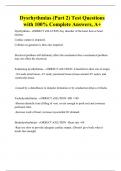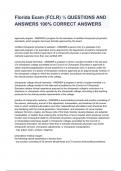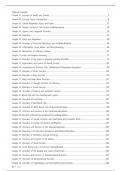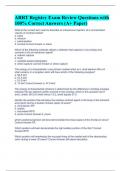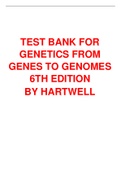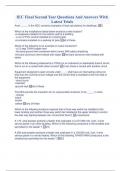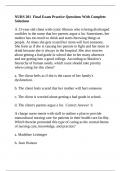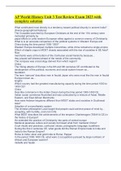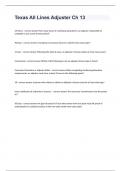Exam (elaborations)
Dysrhythmias (Part 2) Test Questions with 100% Complete Answers, A+
- Course
- Institution
Dysrhythmia - cORRECT sOLUTION Any disorder of the heart beat or heart rhythm. Cardiac output is impaired. Cellular oxygenation is then also impaired Electrical problem will definitely effect the mechanical but a mechanical problem may not effect the electrical. Explaining dysrhythmias - cO...
[Show more]
